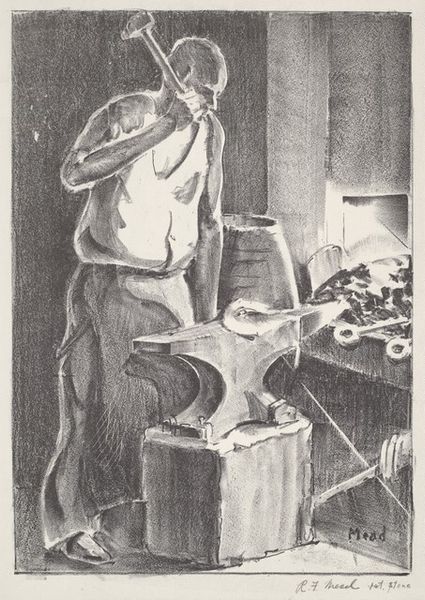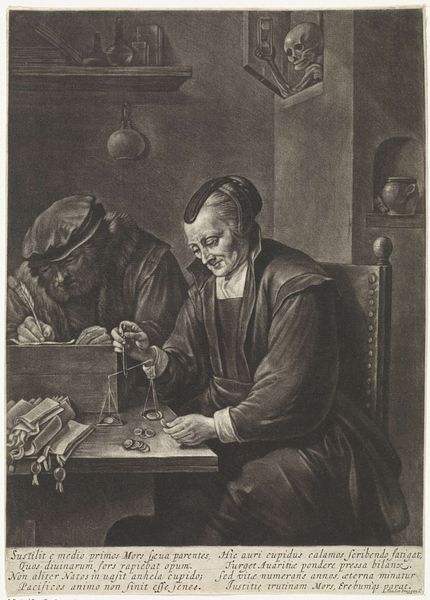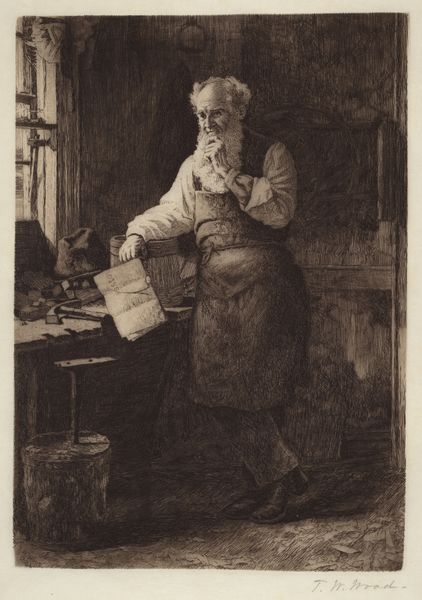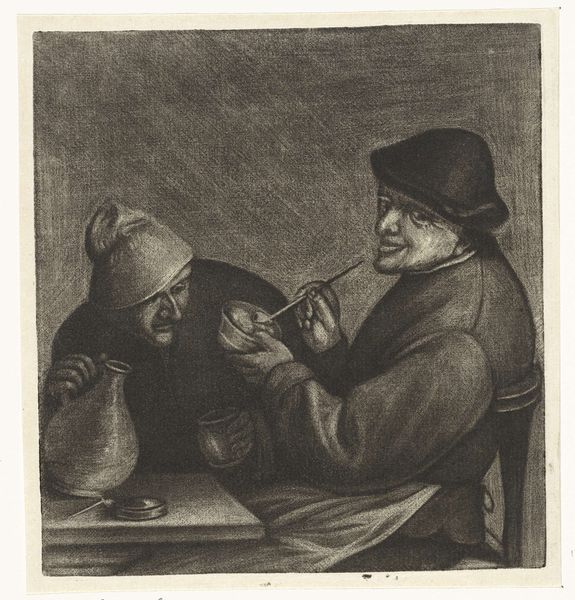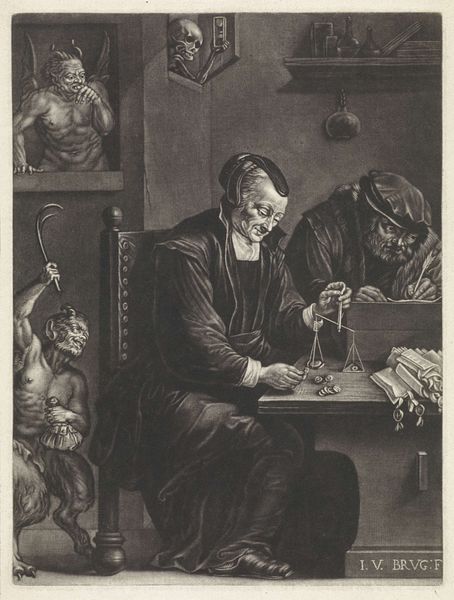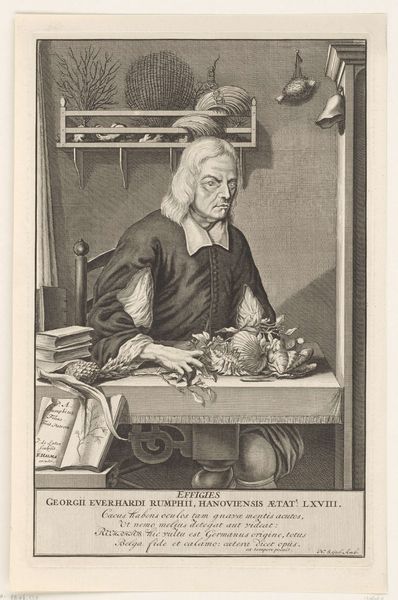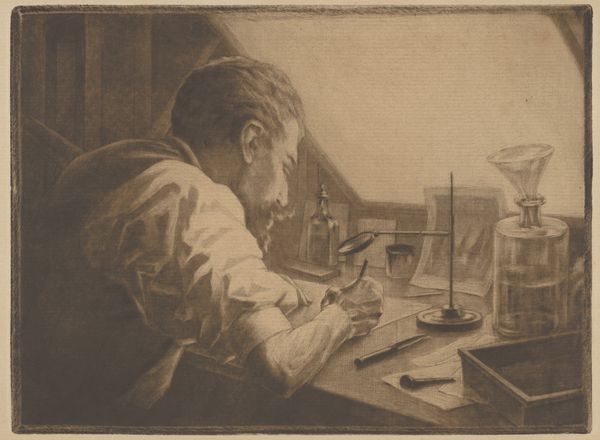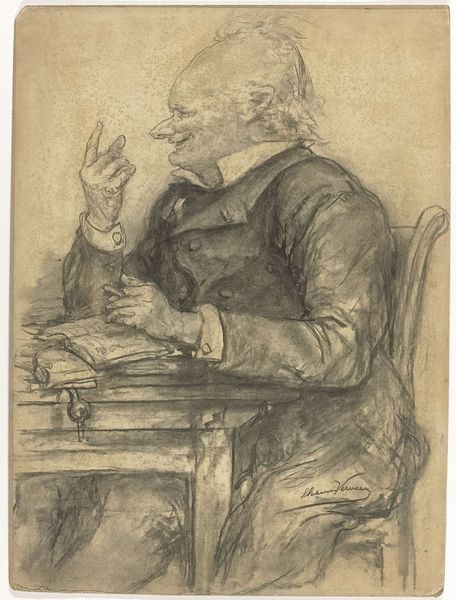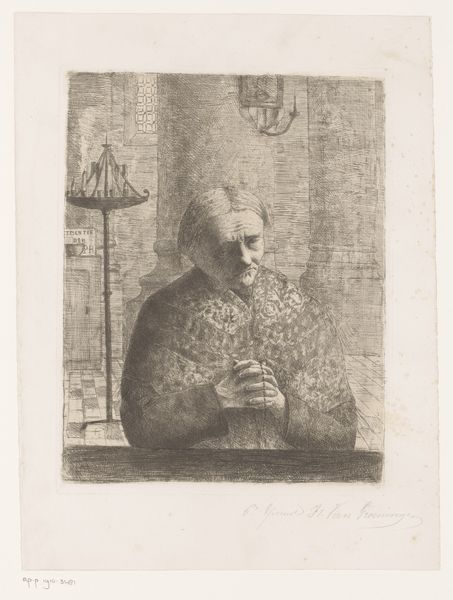
#
pencil drawn
#
facial expression drawing
#
light pencil work
# print
#
pencil sketch
#
charcoal drawing
#
portrait reference
#
pencil drawing
#
pen-ink sketch
#
portrait drawing
#
pencil work
Dimensions: stone: ca. 355 x ca. 253 mm image: 308 x 232 mm sheet: 438 x 305 mm
Copyright: National Gallery of Art: CC0 1.0
Curator: Charles Wheeler Locke's "The Cobbler," created around 1932, offers an intimate glimpse into a traditional craft. The piece, rendered as a print, immediately struck me with its somber mood. Editor: Yes, there’s a quiet dignity in this depiction. It feels deeply personal, perhaps a study of labor and the individual against the backdrop of industrialization during that period. Curator: The setting itself contributes to this feeling. The meticulous rendering of the tools and the arrangement of the cobbler's workshop invite consideration. Each object has symbolic weight rooted in time and purpose. Notice the placement of the old shoe form, held still by his work. The shadow behind suggests his lineage of work and community memory. Editor: Absolutely, and beyond the objects, it speaks to the socioeconomic realities of craftspeople during the Depression era in the US. I am compelled to note how the light hits his tired expression, drawing out all his hard labor. We might even ask questions about race and social mobility here. Who had the luxury of leisurely portraits, and who was defined by their manual labor? Curator: The act of mending shoes might be read as the maintenance of social structure itself—holding together something worn or damaged. It evokes themes of resilience. Even the wheel behind him hints at continuous cyclical processes, a reminder that some forms of labor persist regardless of technological change. Editor: It is important to mention that Locke worked with other politically engaged artists from his time to champion underrepresented communities. The deliberate artistic decision to highlight a working-class figure suggests not merely documenting a trade, but advocating for a broader acknowledgment of their contribution to society. This pencil print then takes on a narrative quality that resonates deeply with contemporary struggles around work, class, and social equity. Curator: I concur; it allows viewers to find connections with our past while reminding us of enduring themes embedded within labor. I think it is through images such as these that we uncover cultural memories of endurance. Editor: Precisely; situating "The Cobbler" within the ongoing narratives surrounding identity and politics gives a fresh perspective on a work that goes well beyond its aesthetic qualities.
Comments
No comments
Be the first to comment and join the conversation on the ultimate creative platform.
